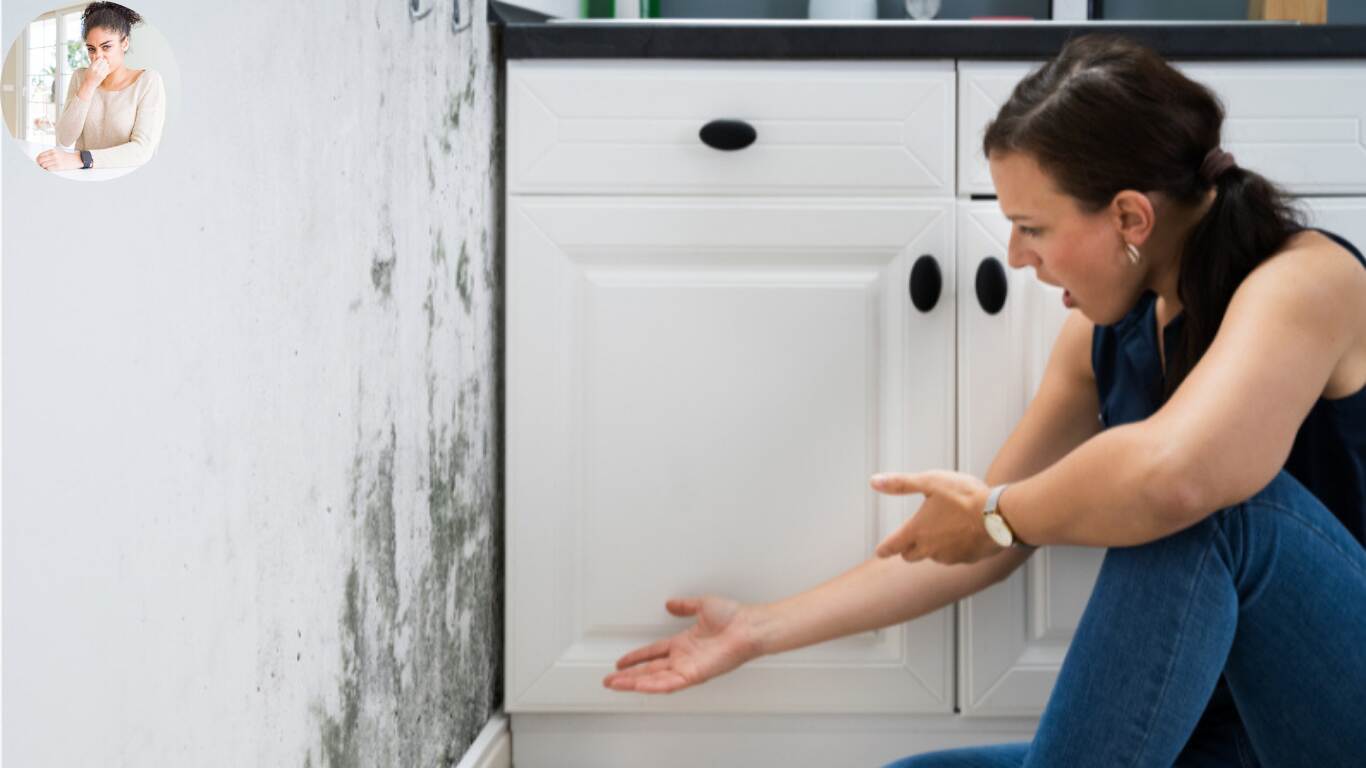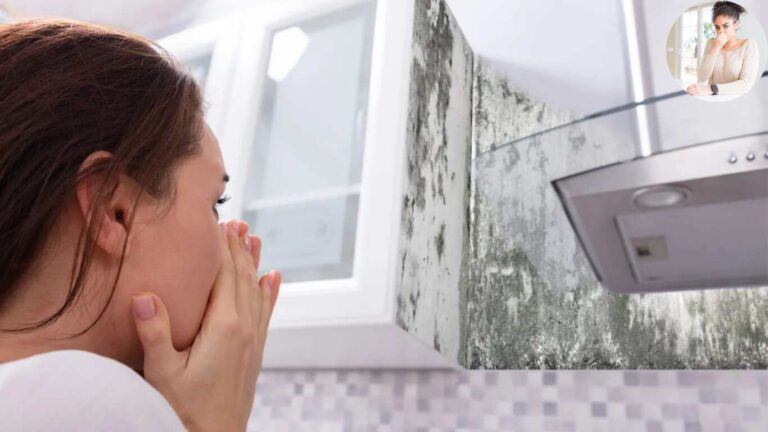Returning home after time away only to find your house smells musty is a common experience. This unpleasant odor often develops when a home is left unoccupied because of a lack of air circulation, which allows moisture to build up and creates ideal conditions for mold and mildew growth. Stagnant air, combined with humidity or hidden leaks, can cause musty smells to intensify during your absence. Even in the absence of visible mold, dust, grime, or soiled carpets can contribute to the stale scent, especially if windows and doors have remained closed. Understanding why this happens is the first step to restoring freshness to your living space.
Causes of a musty smell in a house:
A musty smell in your house, especially after a long absence, can be unsettling. Understanding the causes helps tackle the issue effectively.
moisture are primary culprits. When humidity levels rise, excess moisture seeps into walls and furnishings, creating an ideal environment for unpleasant odors to develop.
Poor ventilation exacerbates this problem. Stagnant air allows dampness to linger in enclosed spaces like basements or attics where airflow is limited. Without proper circulation, smells become trapped and concentrated.
Mold and mildew growth often thrive in these conditions as well. These fungi flourish on organic materials when moisture is present, releasing their distinctive musty scent into the surrounding area.
Identifying these triggers is crucial for restoring freshness to your home atmosphere before embarking on any cleaning effort.
Humidity and moisture
moisture are often the primary culprits behind that musty smell in your home. When you leave your house for an extended period, humidity can build up unnoticed.
High levels of indoor moisture create a breeding ground for unpleasant odors. It seeps into carpets, curtains, and furniture, making everything feel damp and stale.
In warm climates or during hot summer months, this issue becomes even more pronounced. The air holds more water vapor, which can lead to condensation on surfaces.
When the conditions are just right—especially with poor ventilation—the smell intensifies. You might return to find it lingering like an unwelcome guest.
Monitoring humidity levels is essential in combating this problem. Aim for a balanced atmosphere within your home to keep those musty odors at bay.
Poor ventilation
Poor ventilation can significantly contribute to that musty smell lingering in your home. When air circulation is inadequate, moisture accumulates, creating an environment ripe for unpleasant odors.
In spaces where airflow is restricted—like basements or attics—the humidity levels can rise. This stagnant air traps odors and prevents fresh air from flowing through the house.
Moreover, without proper ventilation, any existing pollutants or stale scents have nowhere to go. They linger longer than they should, making your space feel less inviting.
If you’ve been away from home for a while, this lack of airflow might be more noticeable upon your return. It’s essential not only to improve circulation but also to ensure that all areas of the house receive adequate fresh air regularly.
Mold and mildew growth
Mold and mildew thrive in damp, dark environments. If your house has been closed up for a while, these fungi can quickly take hold. They love to settle in areas that are often overlooked, like basements, attics, or behind furniture.
They release spores that contribute significantly to that musty smell. Not only do they smell unpleasant, but they can also pose health risks if left unchecked.
Even small patches of mold can expand rapidly under the right conditions—warmth and moisture being key factors. Once you notice any signs of their presence, it’s essential to act fast before the situation worsens.
Ignoring the issue won’t make it go away; it will likely escalate into a bigger problem requiring professional intervention down the line.
How to get rid of the musty smell:
Start by identifying the root cause of the musty smell. Inspect areas prone to dampness, like basements or bathrooms, for signs of mold or mildew. Address any leaks or water damage immediately.
For deep cleaning, mix equal parts white vinegar and water in a spray bottle. This natural solution works wonders on surfaces that harbor odors. Don’t forget to scrub carpets and upholstery with an appropriate cleaner.
Baking soda is another great deodorizer. Sprinkle it on affected carpets or furniture and let it sit overnight before vacuuming it up.
Consider using air purifiers with HEPA filters to help remove lingering particles from the air. They can significantly improve indoor air quality while tackling unwanted smells effectively.
Identify and address the root cause
To tackle the musty smell in your home, pinpointing the root cause is essential. Start by inspecting areas prone to moisture buildup, such as basements and bathrooms. Check for signs of water damage or leaks.
If there are any damp spots on the walls or ceiling, pay attention to them. These can indicate hidden moisture issues that need addressing immediately.
Next, check for mold or mildew growth—often a key culprit behind unpleasant odors. If you spot any, it’s crucial to act quickly before it spreads further.
Also, consider your home’s ventilation system. Sometimes stale air can contribute significantly to that musty scent lingering around.
By being thorough in this investigation, you’re laying the groundwork for effective solutions and freshening up your living space once more.
Deep cleaning and deodorizing methods
To tackle a musty smell, deep cleaning is essential. Start with carpets and rugs. Use a vacuum equipped with a HEPA filter to trap allergens and dust particles effectively.
When it comes to hard surfaces, mix equal parts of water and white vinegar in a spray bottle. Besides cleaning, this solution neutralizes odors as well. Wipe down walls, baseboards, and any furniture that may have absorbed the scent.
Deodorize upholstery with baking soda or steam cleaning.Sprinkle it generously over couches or chairs, let it sit for several hours, then vacuum it up for fresher results.
Don’t forget about your air ducts! Dust accumulation can contribute to mustiness. Change filters regularly and consider professional duct cleaning if needed.
Preventing future musty smells:
To keep your home smelling fresh, focus on reducing humidity. Use dehumidifiers in problem areas like basements or bathrooms. They can make a big difference in preventing dampness.
Ventilation is key as well. Open windows whenever possible to let fresh air circulate. Consider installing exhaust fans in high-moisture areas to help remove stale air.
Regular cleaning is vital too. Dust and dirt can contribute to musty odors over time. Establish a routine that includes wiping down surfaces and vacuuming carpets frequently.
Check for leaks around windows, pipes, and roofs regularly. Even small drips can create an environment ripe for mold growth.
Consider using moisture-absorbing products such as silica gel packs or activated charcoal bags placed strategically around your home to combat lingering odor issues effectively.
Maintenance tips for reducing humidity and improving ventilation
To keep your home fresh and free of musty odors, regular maintenance is key. Start by monitoring indoor humidity levels. Ideally, aim for a range between 30% to 50%. You can use dehumidifiers in areas prone to moisture, such as basements or bathrooms.
Next, ensure proper ventilation throughout your house. Open windows whenever possible to allow fresh air circulation. Consider installing exhaust fans in high-moisture areas like kitchens and baths to help move damp air outside.
Regularly inspect any potential sources of leaks or water intrusion around windows, roofs, and plumbing fixtures. If you find issues, address them promptly before they lead to more significant problems.
Consider using moisture-absorbing products like silica gel packets or activated charcoal in closets and storage spaces where humidity tends to linger. These small changes can make a big difference in maintaining a pleasant atmosphere at home while keeping that musty smell at bay after returning from time away.
You may also read(why are woodlouse in my house)

